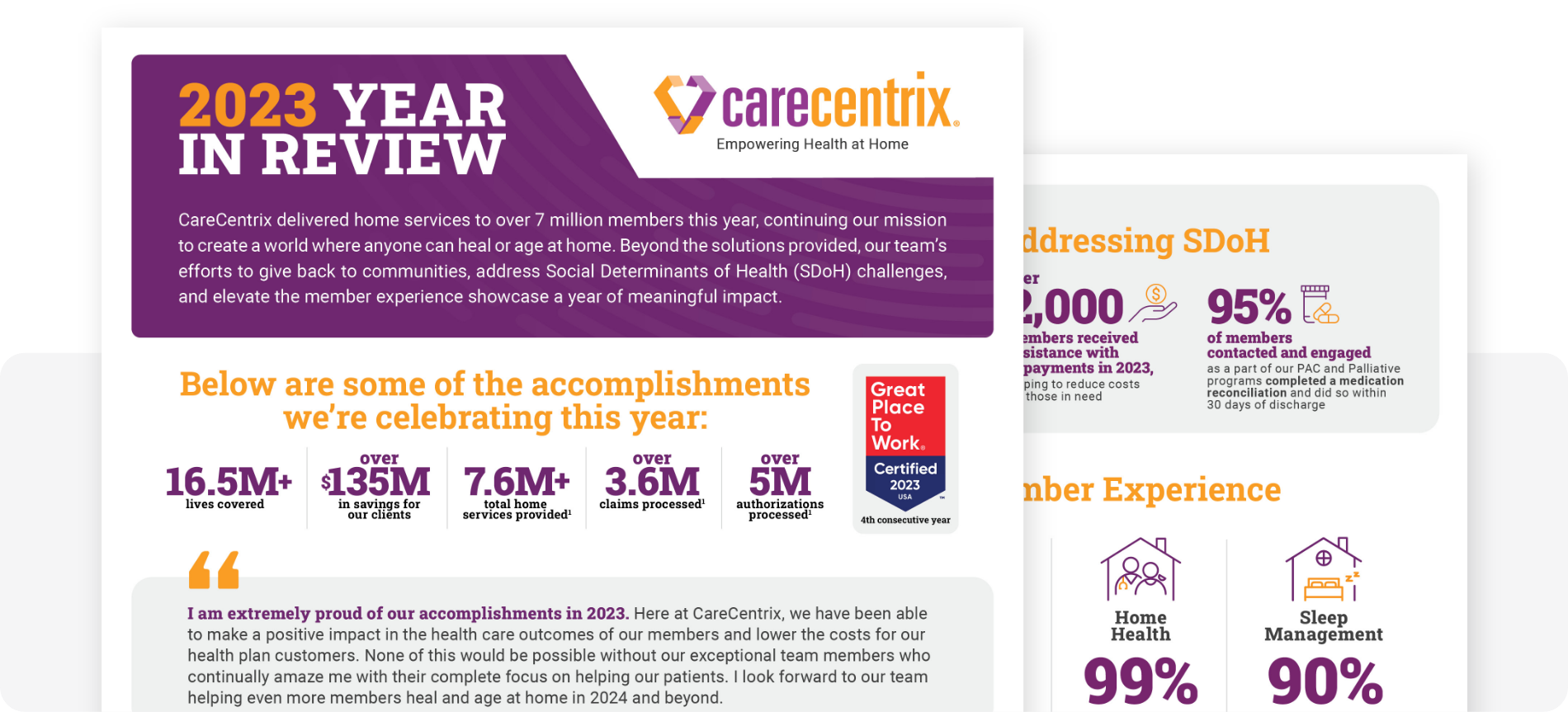
Powered by new technology, remote monitoring tools and tele-health services are already proving their value in helping post-acute care providers deliver improved results. However, there’s much to be done to fully understand and address the totality of a patient’s care needs. Social determinants of health (SDoH) are increasingly being recognized as important factors to take into consideration if we are to improve patient outcomes while reducing costs. As we transition from fee-for-service to value-based payment models, identifying which SDoH impact a patient’s path to healing is of outmost importance.
What is social determinants of health?
SDoH include a person’s social and physical environment, health services, and structural and societal factors. While these factors don’t show up on a medical device, they clearly have a huge impact on a person’s health and are extremely important considerations when defining the best path to post-acute care and a patient’s overall well-being. SDoH can include access to healthy food, the presence of a caregiver in the home, a living environment that’s conducive to healing at home, or the existence of hazardous conditions that create challenges beyond the patient’s clinical considerations.
When it comes to social determinants of health, choices matter
Although we can all agree that SDoH impact a patient’s outcomes, there are still questions about which variables have the biggest impact. Continuous use and improvements in technology and data analytics will certainly help narrow down those factors.
Pilot programs, such as the Healthy Opportunities initiative in North Carolina, will identify the most cost-effective ways to deliver value-based care. As the industry more broadly integrates key SDoH into their analytics, artificial intelligence (A.I.) and machine-learning tools will help us decipher which should be addressed immediately to deliver the desired results. Tailoring health benefits to those who are chronically ill can address gaps in care and improve specific health outcomes.
From acute care to chronic care management
The current care model is focused on helping people get into the healthcare system rather than proactively dealing with those causes that are keeping them from remaining healthy and aging at home.
Using data analytics and technology to identify SDoH that are relevant to post-acute care is a strategic first step to architect better health outcomes in the right setting at the best cost. Designing software platforms that allow us to continually incorporate new SDoH data that we may identify as relevant is also important. A.I. and machine learning will then help us personalize the post-acute plan that works best for each patient based on his or her needs.
Technology alone cannot achieve the massive shift to incorporate SDoH management as part of the post-acute care plan. Combining human interaction – care, companionship, support – with new technologies and data will always deliver the best outcomes.
Leading the way
CareCentrix leverages data from 270 million patient records, along with massive public data sets that incorporate economic, psychosocial, and SDoH factors. This can directly affect the likelihood a patient will be readmitted, while creating the best path to healing at home – which can often be home itself.
Using our proprietary HomeBridge platform, we marry advanced analytics with clinical teams to develop a personalized care plan for each individual’s unique situation. This plan is available to the entire care team for optimal communication and coordination. Our systems use A.I. technology and machine learning to continuously gather data that will create even better solutions in the future.
Addressing the holistic needs of patients is proving to deliver better health outcomes and reduce cost. By leveraging machine learning and A.I. technology that includes social determinants of health, we have seen a 36 percent reduction in 90-day readmissions, and a 25 percent reduction in post-acute care spending.
As we continue to address the challenges in this rapidly changing part of the healthcare system, advances in A.I. will spark a complete paradigm shift in how post-acute care will be delivered.





